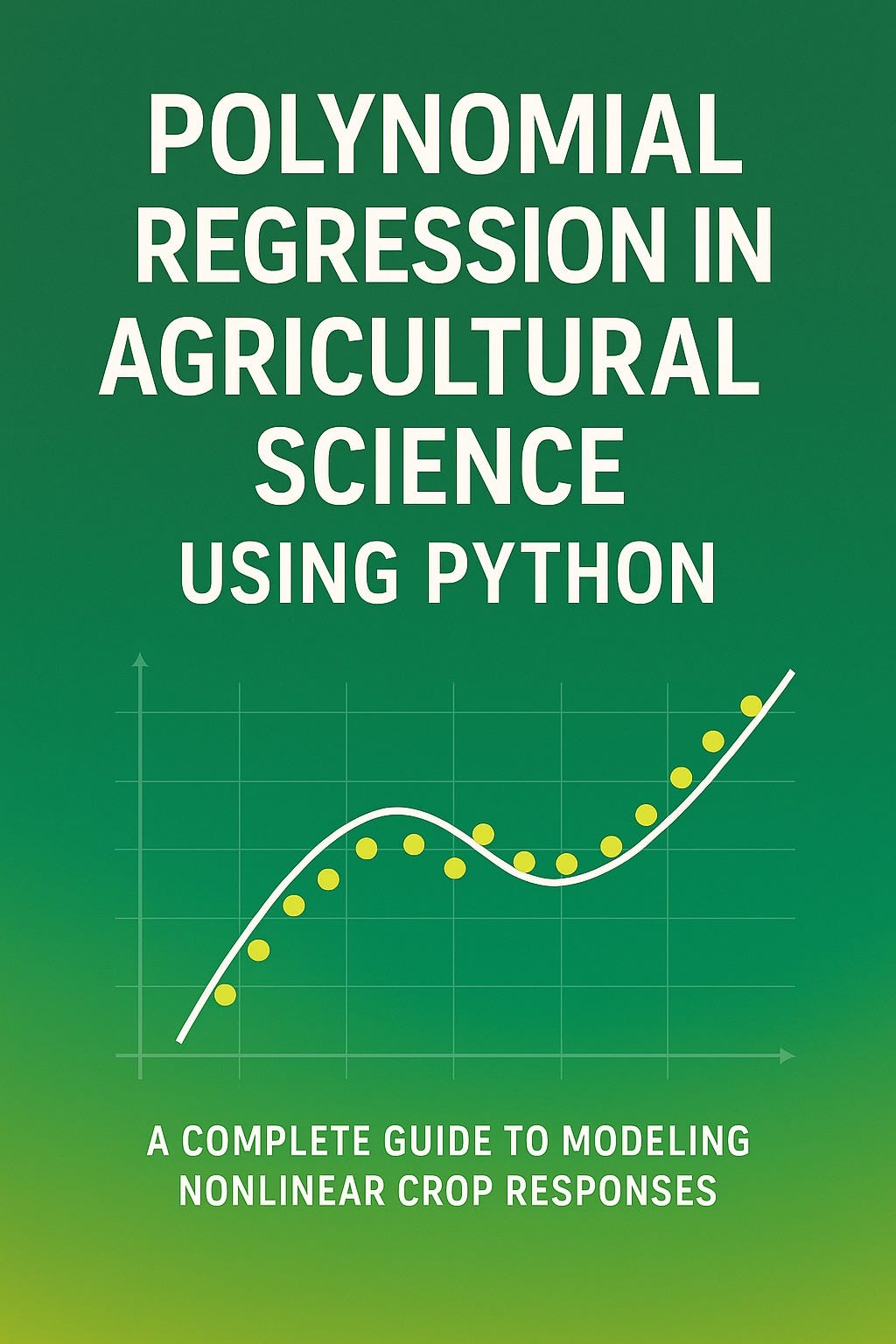Polynomial Regression in Agricultural Science Using Python: A Complete Guide to Modelling Nonlinear Crop Responses
This article demonstrates how polynomial regression with Python enables agricultural scientists and practitioners to model and interpret nonlinear crop responses, facilitating more precise and data-driven optimisation of farm management practices.
Article Outline:
Introduction
The importance of capturing nonlinear relationships in agricultural data.
The role of polynomial regression in understanding and optimising crop responses.
Advantages of using Python for statistical modeling and data analysis in agriculture.
Understanding Polynomial Regression in Agriculture
Mathematical formulation of polynomial regression.
Why many agricultural phenomena (e.g., yield vs. fertiliser) follow curved trends.
How polynomial regression extends linear regression for more accurate modeling.
Key Applications in Agricultural Science
Modeling crop yield as a function of fertiliser, irrigation, or planting density.
Analysing plant growth, resource optimisation, and environmental impacts.
Identifying optimal input levels for farm management and agronomic research.
Preparing Data for Polynomial Regression in Python
Structuring datasets for agricultural analysis.
Data cleaning, feature engineering, and initial visualization using pandas and matplotlib.
Creating polynomial features with Python tools.
Step-by-Step Polynomial Regression in Python
Using scikit-learn’s
PolynomialFeaturesandLinearRegression.Fitting the polynomial model and interpreting coefficients.
Generating fitted values and residuals for further analysis.
Visualising Results and Drawing Insights
Plotting observed data and fitted polynomial curves with matplotlib.
Assessing model fit, understanding turning points, and making recommendations.
Practical considerations in interpreting polynomial models.
Limitations and Best Practices
Risks of overfitting with high-degree polynomials.
Extrapolation challenges and the importance of domain knowledge.
Model validation and responsible use of polynomial regression in agricultural contexts.
Conclusion
Recap of how polynomial regression with Python empowers agricultural scientists to analyse complex relationships.
Encouragement to integrate Python-based analytics for more data-driven, sustainable agricultural decision-making.
Keep reading with a 7-day free trial
Subscribe to AI, Analytics & Data Science: Towards Analytics Specialist to keep reading this post and get 7 days of free access to the full post archives.


